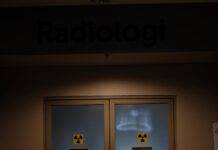
Radiation Safety: Exposure Limits and Monitoring
Introduction
Radiation is an integral part of various industries, from healthcare to nuclear energy. While it serves essential purposes, ensuring radiation safety is paramount to protect workers and the public from potential health risks. This article explores the significance of setting exposure limits and implementing monitoring practices to maintain a safe environment when working with radiation.
Radiation Exposure Limits
- Regulatory Standards
- Adherence to regulatory standards for radiation exposure limits
- Complying with guidelines established by organizations such as the International Commission on Radiological Protection (ICRP) and the U.S. Environmental Protection Agency (EPA)
- Occupational Exposure Limits
- Establishment of specific occupational exposure limits for radiation workers
- Ensuring that radiation doses received by workers during their duties remain within acceptable and safe levels
- Public Exposure Limits
- Defining exposure limits for the general public in areas near radiation sources
- Implementing measures to prevent unintentional exposure and maintaining public safety
- Dose Equivalent Limits
- Setting dose equivalent limits to quantify radiation exposure
- Calculating doses in a way that considers the varying biological effects of different types of radiation
- Cumulative Dose Monitoring
- Implementing systems for monitoring cumulative radiation doses over time
- Ensuring that individuals do not exceed established limits throughout their careers
- Emergency Exposure Limits
- Establishing emergency exposure limits in case of unexpected incidents
- Implementing immediate measures to mitigate exposure and protect individuals in emergency situations
Radiation Monitoring Practices
- Personal Dosimetry
- Providing personal dosimeters for radiation workers
- Monitoring individual exposure levels and ensuring compliance with established limits
- Area Radiation Monitoring
- Implementing area radiation monitoring in facilities
- Identifying radiation hotspots and ensuring that radiation levels remain within permissible limits in work areas
- Regular Calibration of Monitoring Equipment
- Conducting regular calibration of radiation monitoring equipment
- Ensuring accurate and reliable measurements for both personal dosimeters and area monitoring devices
- Real-Time Monitoring Systems
- Utilizing real-time monitoring systems for immediate feedback
- Enhancing situational awareness and enabling prompt responses to fluctuating radiation levels
- Training on Monitoring Equipment
- Providing comprehensive training on the use of monitoring equipment
- Ensuring that individuals responsible for monitoring understand proper procedures and can interpret results accurately
- Record Keeping and Documentation
- Maintaining detailed records of radiation exposure and monitoring data
- Facilitating regulatory compliance, audits, and the identification of trends over time
- Review of Monitoring Data
- Regularly reviewing monitoring data to identify patterns or anomalies
- Taking corrective actions based on trends to prevent potential overexposure
Conclusion
In conclusion, establishing and maintaining radiation exposure limits, coupled with robust monitoring practices, is essential for ensuring the safety of individuals working with radiation and the surrounding community. Adherence to regulatory standards, implementation of comprehensive monitoring systems, and continuous training contribute to a culture of radiation safety. By prioritizing these measures, organizations can harness the benefits of radiation while minimizing potential risks.
Radiography Hazards and Precautions
How to Calculate Radiation Safe Distance in Industry
Radiography Safety Toolbox Talk Meeting
Frequently Asked Questions (FAQs)
- Why is setting radiation exposure limits important?
- Setting radiation exposure limits is crucial to protect workers and the public from potential health risks associated with radiation. Adhering to established limits ensures that radiation doses remain within acceptable levels, minimizing the risk of adverse effects.
- What are some key components of radiation exposure limits?
- Key components include regulatory standards, occupational exposure limits, public exposure limits, dose equivalent limits, cumulative dose monitoring, and emergency exposure limits for unexpected incidents.
- What is personal dosimetry in radiation monitoring?
- Personal dosimetry involves providing radiation workers with dosimeters that measure individual exposure levels. This practice allows for the monitoring of radiation doses received by individuals during their duties, ensuring compliance with established limits.
- Why is real-time monitoring important in radiation safety?
- Real-time monitoring provides immediate feedback on radiation levels, enhancing situational awareness. It enables prompt responses to fluctuating radiation levels, contributing to the overall safety of individuals working with radiation.
- How does record keeping and documentation contribute to radiation safety?
- Record keeping and documentation of radiation exposure and monitoring data facilitate regulatory compliance, audits, and the identification of trends over time. Comprehensive records enable organizations to assess and improve radiation safety measures based on historical data.





















